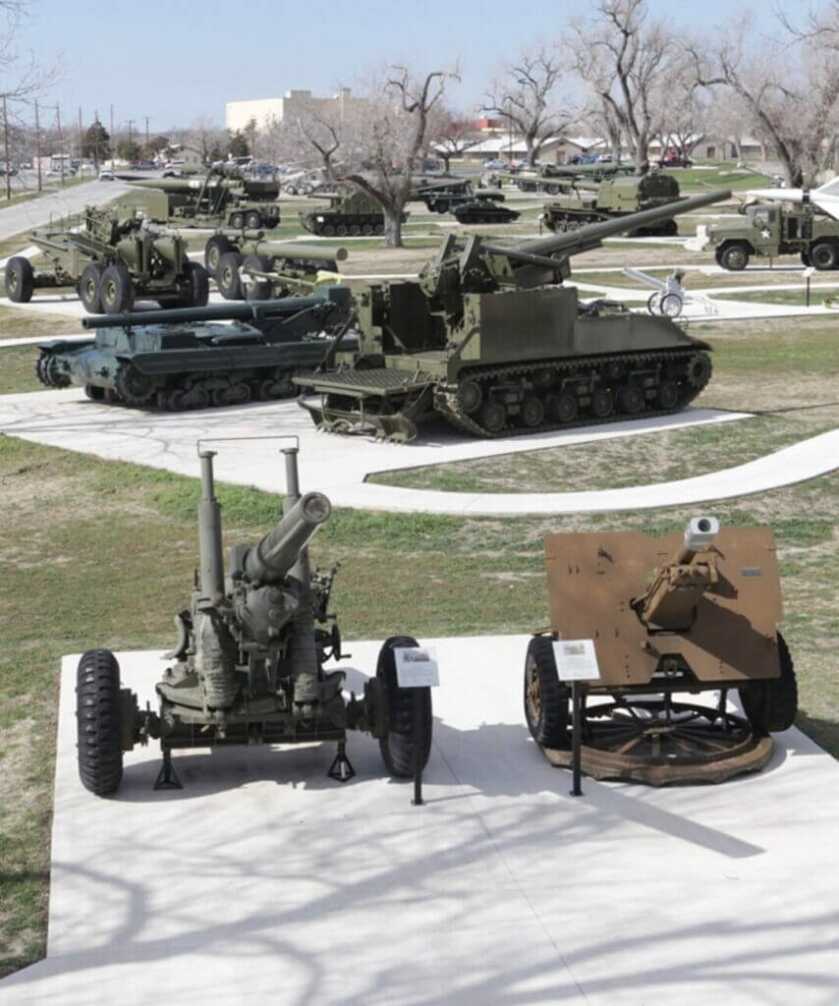
Estimated reading time: 13 minutes
When I got orders to Fort Sill, Oklahoma, as a young 2nd Lieutenant right out of flight training I thought there had been a mistake. At least I hoped that was the case. I couldn’t find anybody in the Aviation community who had ever been there. I checked with the little old lady in tennis shoes who managed such stuff. She verified that I was indeed doomed.
Table of contents
Turning Lemons into Lemonade

Fort Sill is the home of the Field Artillery. It also turned out to be the coolest first operational assignment for which an Aviation Lieutenant might hope. For a time, I was the only Company-grade officer on post in a flight suit. That gave me credibility. Colonels and Generals who might otherwise not have scraped their boots on me were sincerely interested in my opinions. I got to fly UH-1H, OH-58A, and CH-47D aircraft while there. Lawton was good for my family as well. I worked hard, but it was a great time.
One of the best-kept secrets thereabouts is the Wichita Mountains Wildlife Refuge. Comprising some 60,000 acres of rugged granite mountains, sweeping prairies, and freshwater lakes adjacent to Fort Sill to the north, the wildlife refuge was mesmerizing. I’ve traveled the world, and there were some geological formations in the Wichita Mountains that were unlike anything I have ever encountered elsewhere.
Baker Peak – Hidden Treasure

22,400 of those 60,000 acres are open to the public. The rest is fenced into a Special Use Area reserved solely for wildlife. On rare occasions, the local Park Rangers will take a busload of enthusiasts behind the fence to listen to the elk bugle. You have to arrange this well in advance, and it doesn’t happen very often. My wife and I were fortunate enough to pull it off.
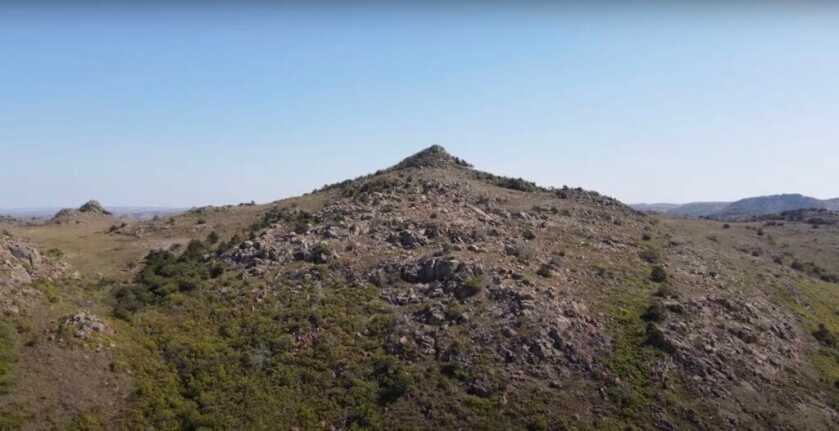
Tucked away in Comanche County, Oklahoma, deep inside the Special Use Area is a modest rocky feature called Baker Peak. This 2,395-foot mountain is south of Cutthroat Lake and west of Grace Mountain. It juts up otherwise forgotten and lonely from the surrounding desolate terrain.
The Park Rangers that day related a most fantastic tale concerning how this forlorn rock got its name. After decades of searching, the only decent Internet reference I can find is a brief but professionally produced YouTube video by a local history enthusiast. It has only 504 views at the time of this writing. The story in the video loosely parallels that told by the Rangers.
Private Baker

The story goes that Private Baker was an Army scout during the Indian Wars. The YouTube video claimed he was out scouting solo for Brigadier General Matthew Arbuckle. That would have set this fight in the 1830s. If I recall correctly, the Rangers’ version of the tale had Baker out with a comrade in the service of Custer’s Seventh Cavalry. That would have made it 1869. The site of Custer’s winter bivouac was right down the street from our house on post. Considering how dangerous this place was at that time it strains credulity that a uniformed member of the Army would be out scouting alone, so I tend to subscribe to the Park Rangers’ version.
Baker and his buddy purportedly got separated from the main body of troops and found themselves suddenly pursued by a hostile Indian war party. The video alleged that these were likely Kiowas. According to the Rangers, both soldiers were on horseback, and they also had a mule burdened with a case of ammunition for their rifles. Unable to get back to their parent command, they retreated to what would be known as Baker Peak, the most prominent high ground in the immediate area.
Things Get Real
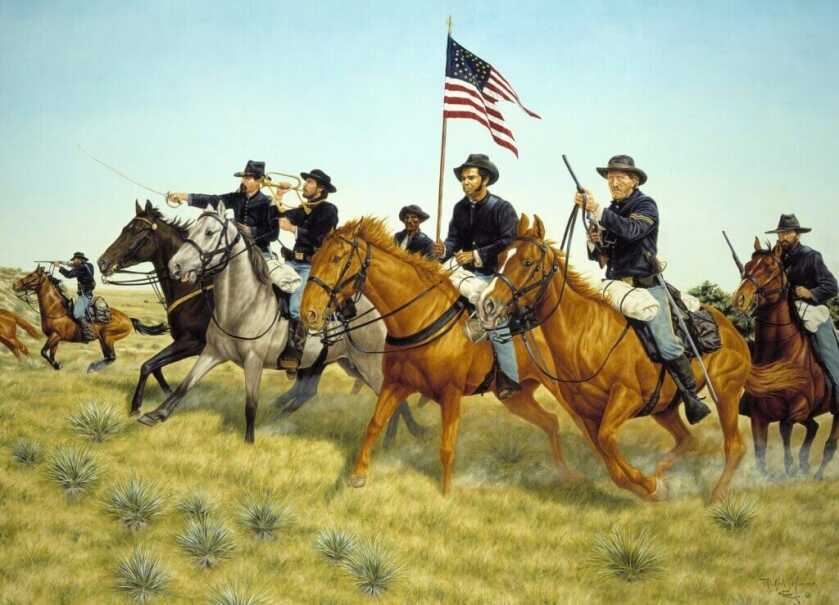
By now the Indians were close, and the soldiers’ mounts fell to hostile fire. Baker and his buddy had just enough time to salvage the spare ammo and scramble to the top of the peak before they were surrounded. Now with Indians all around, the two Army scouts fortified their position as best they could.
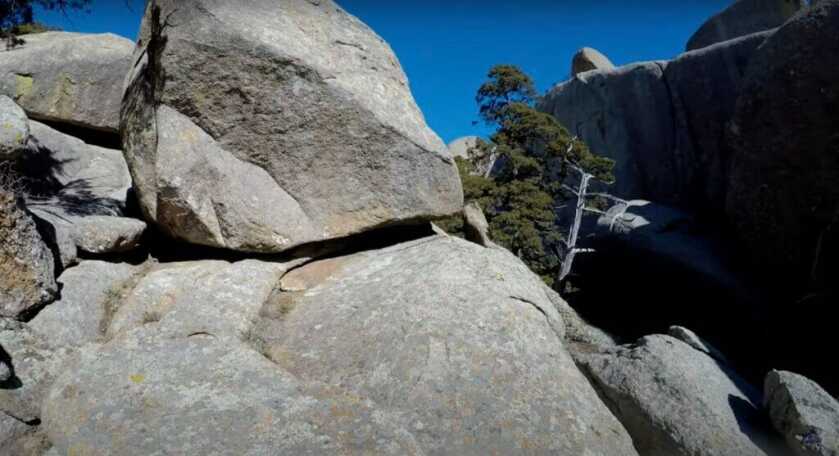
Baker Peak makes for a superb defensive redoubt. There is only one reasonable approach, and that is through a deep rocky defile. These are old mountains, and most of the ravines and valleys are characterized by massive rivers of boulders.
Tactical Details
The legend went that Baker’s buddy was hit and killed in short order, leaving PVT Baker alone and cut off on this bleak mountaintop. There he remained for three long days and nights, avoiding sleep for fear of Indians infiltrating to kill him. He was also purportedly without food or water.
The story went that PVT Baker was surrounded by an Indian war party some seventy strong. I have no idea how they arrived at that number. Each time the Indians drew close he would repel them with rifle fire. The attacking Indians supposedly showered the hilltop with both arrows and bullets but were unable to reach Baker hunkered down as he was among the rocks.
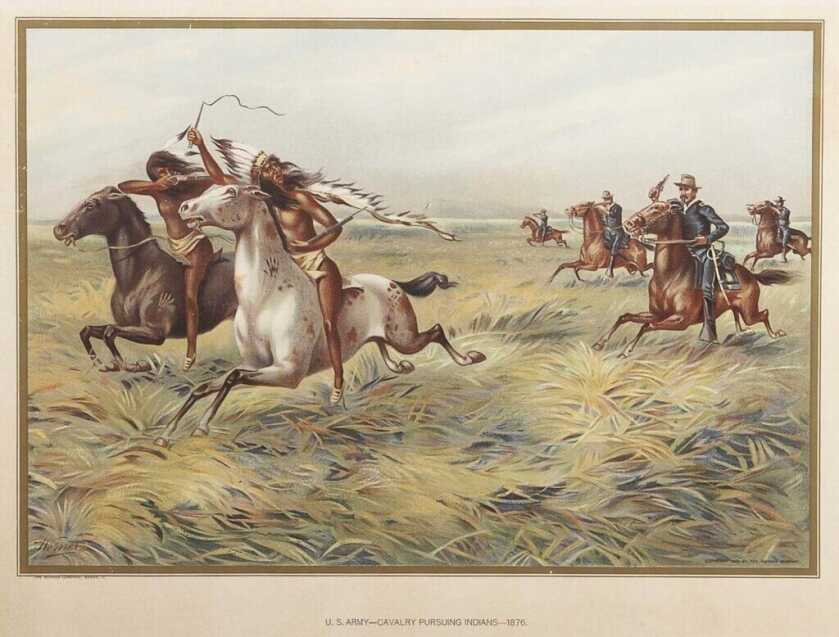
Eventually, an Army officer perched upon an adjacent hilltop noticed a wisp of smoke coming from the distant peak and dispatched an armed patrol. The arrival of the Cavalrymen took the fight out of the Indians who retreated in good order. Baker was rescued, his buddy’s body recovered, and the patrol returned to the 7th Cav laager.
The Weapons of the Baker Peak Legend

If the YouTube version of this tale is accurate, PVT Baker would likely have been armed with a flintlock musket akin to the 1835 Springfield. This .69-caliber weapon was loaded from the muzzle via paper cartridges and weighed around ten pounds. Though these weapons could fire buck and ball loads, the most common rounds fired a single lead ball. These lead balls were intentionally left slightly undersized to accommodate the inevitable powder fouling.
The effective range of the 1835 Springfield was listed as between 100 and 200 yards, though fifty yards was likely more realistic due to its smoothbore design. A determined operator could be expected to get off two to three rounds per minute of aimed fire. The 1842 Springfield was the same weapon fitted with a percussion lock.
Well, Probably not…
Defending yourself alone on a barren hilltop against 70 hostile Indians while armed with a flintlock musket is, I suppose, theoretically possible. However, it is practically improbable. Even if the terrain canalized the attackers up a single gully, I have to think these Indians could have eventually gotten to PVT Baker under those circumstances. That is another piece of the puzzle that leads me to think this exchange likely occurred after the Civil War.
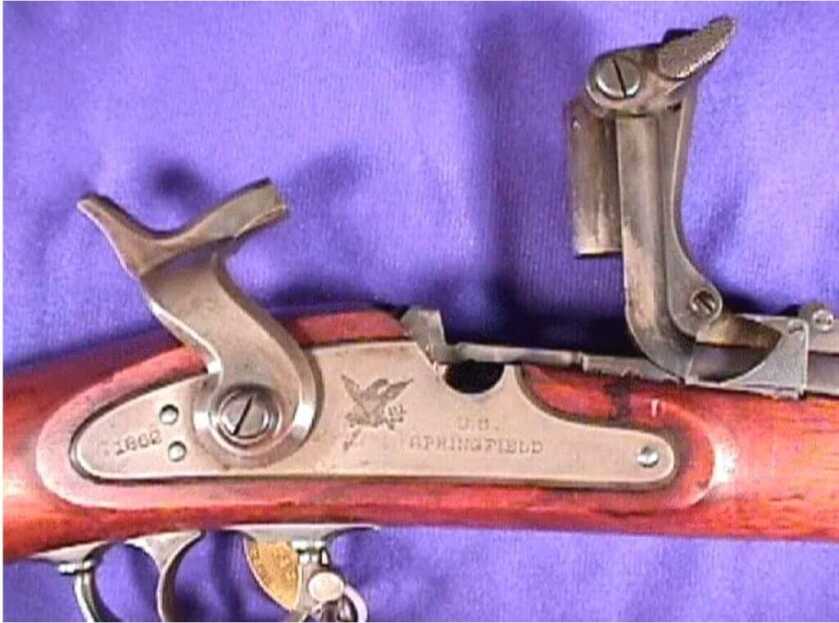
If this fight took place around 1869 then PVT Baker likely carried some sort of Civil War-surplus weapon. US Cavalry troopers were liberally equipped with Spencer repeaters during this time. Additionally, there were large numbers of First and Second Allin breechloading conversions of the Springfield family of rifled muskets. The definitive Trapdoor Springfield did not see service until 1873. The falling-block Sharps was also in common use at the time.
Load on Sunday and Shoot All Week…
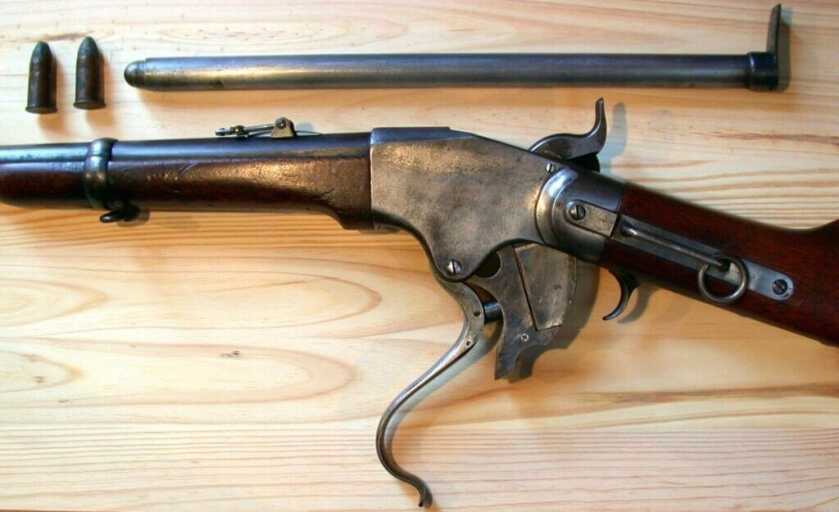
The Spencer repeater was designed in 1860 by Christopher Spencer and was the first military repeating rifle to fire metallic cartridges. The definitive Spencer carbine fed via a seven-round tubular magazine in the buttstock. While the Spencer’s lever action system did feed fresh rounds into the action, the hammer had to be manually cocked for each round fired.
Compared to the muzzleloaders of the day, the Spencer really did offer a substantial enhancement in firepower. Around 200,000 copies rolled off the lines before production ceased in 1869. The Spencer offered a practical rate of fire of between 14 and 20 rounds per minute.
Springfield Upgrades
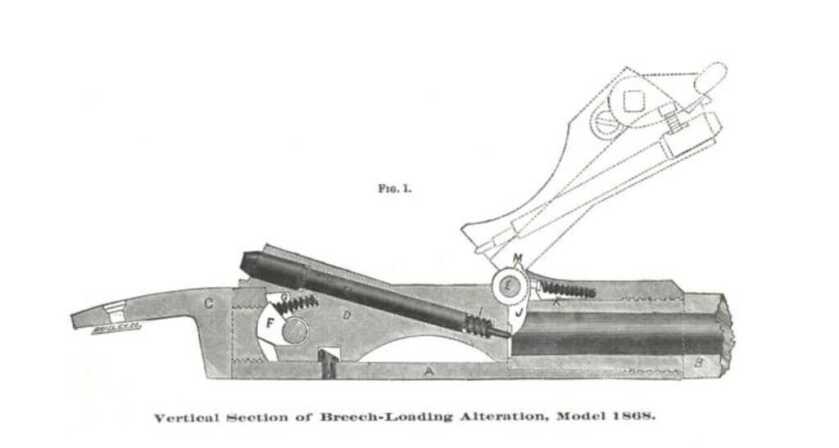
Breechloading conversions of Springfield rifles typically involved machining off the near end of the barrel and replacing that portion with a pivoting chamber assembly that accepted a metallic cartridge. Early conversions included a barrel liner that sleeved the barrel down from .58 to .50 caliber, but these liners tended to loosen over time. The Model 1868 included a new-made .50-caliber barrel that resolved this problem. Roughly 50,000 copies were made chambered in .50-70 Government.

The Sharps rifle action was first patented in 1848 and saw regular improvements throughout the Civil War. The definitive cavalry model used during the Indian Wars was chambered in .50-70 Government and weighed 9.5 pounds. This single-shot weapon fed metallic cartridges and offered between 8 and 10 rounds per minute.
Question Everything

The Internet revolutionized the way we manage information. While the Information Superhighway grants me instant access to historical details I use every week to flesh out these stories, it also grants anyone with a keyboard a voice. That results in a great deal of misinformation and outright lies. The discriminating reader should approach stories like these with skepticism.
READ MORE: Dr Dabbs – The Battle for the La Fière Bridge: “I Know of No Better Spot to Die”
In this case, the terrain feature was indeed named after an Army soldier named Baker. The Park Rangers who related the tale to me seemed certain of its veracity. I choose to believe it myself.
Ruminations On the Baker Peak Legend
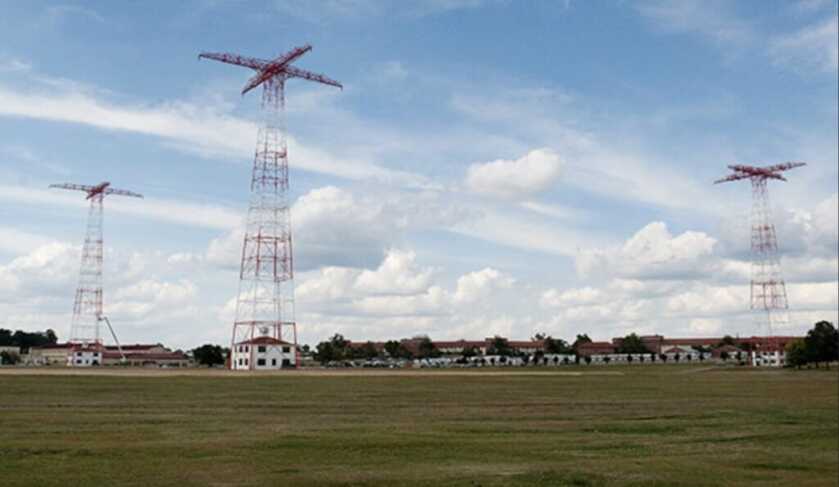
Certain places embody a profound gravitas based upon some deeply poignant event. The Airborne and Ranger Schools at Fort Benning have seen their share of pain as has BUD/S where baby SEALs are born at Coronado in San Diego. I have been to all three of those places and found the experience to be undeniably moving. I was also struck speechless when I placed my hand in the hole that held the cross of Christ. Some places are just bigger than humanity.
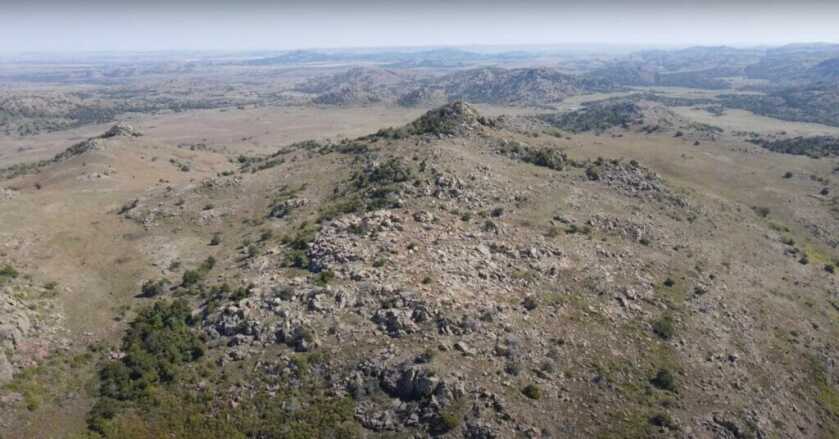
In the story of PVT Baker, we see embodied such unimaginably powerful emotions that are now all but forgotten. Baker fought for his very life for three days not knowing if help was coming or not. Failure would have meant horrible torture and death at the hands of ruthless captors. With the benefit of hindsight, I hope the rest of his life was long, warm, and peaceful.
*** Buy and Sell on GunsAmerica! ***


Dr. Dabbs, I never fail to read your articles, and I never fail to enjoy them. I rate you on a par with Craig Boddington and Wayne van Zwoll, who I have been reading for years. At age 77, I’ve seen a few writers, and devoured guns and hunting mags galore. My “hero”, if you will, was Elmer Keith, and while you ain’t quite there, you’re getting close. Keep on searching out the unusual, and writing about it as only you can do !
Thank you for this story surrounding Ft Sill, Ok. It took me back to my time there in the fall of 1972, my second A I T as a 63 C Track Vehicle Mechanic. I was 18 wide eyed and Lawton had 3.2 beer, good times. My lasting memories of there are the Pecan tree lined streets of the base, Geronimo’s Guard House at the museum, and leaving my left lower at the dental clinic (no time for a root canal) before shipping out for overseas.
Thanks again, Tim Little, SFC (Ret.)
Interesting story. Too bad there wasn’t more records facts for the Dr. to use. Great job Dr. Dabbs
Great story. You did a great job of bringing it to life. Nothing kills a love for history faster than the way it is taught in high schools. People have to feel they were there in order to appreciate it.
Gotta say – the military did afford an opportunity to see sites a civilian will never see! Hard to believe those four little trunnion bolts held the whole thing together along with the “Jesus Nut” on that head of the AH-1G. Tail rotor effectiveness was an important factor of the OH-58A. Keep writing them, Dr. Dabbs!
In the early ’70s Several of us from OU decided that theWichita Mtns needed our attention. We quickly realized that the designated camping areas enjoyed a “Jellystone RV Park” family camping feel that did not fit with what we drank and smoked and the wilderness feel we sought. Also the rangers at that time were understaffed and under motivated. Accordingly we bought some crappy “family” size tents and gear, paid for a spot on the West edge of the campground…set up…then at dusk picked up our packs and snuck off towards the back country. Used two of those small svea stoves,no campfires. The wichitas are far older than the himilaya mtns, worn down to just the bones, abrasive granite nubs of house size boulders. They are like the superstition mtns in AZ in that you can see the peak or ridge you want to go to fairly easily, but not the 8 intervening ridges you have to climb to get where you are going. The granite ate shoes and clothes so that after 5 days in the rocks you looked like a hobo fresh off a boxcar. The elk were a constant suprise bursting on you on the small canyon floors like wild horses. A friend who later drew maps for the State found the site of an abandoned gemstone mine on the fartherest West mtn slope. It was a pit about 8′ diameter going down 30′. Can’t remember which semi precious stone it was. There were small abandoned mines scattered about and literally dozens of caves. Please note we only went in deep winter with temps near freezing, because there were a phenomenal qty of rattlesnakes. So the myths. Jesse and Frank James wandered this way traveling from the Ozarks down to Dallas for sport. Story is they left gold coins in saddlebags in a cave for later recovery. Life (and death) intervened. Years later Frank james returned to the area and leased a small farm. Over the course of a year he never made a crop, but wandered in the mtns. Since he ended up a hotel doorman in St. Louis, their “bank” was never recovered. Myth #2, there were very early Spanish Silver mines in New Mexico. They didn’t refine it, just shipped the high grade ore back to Mexico for processing it. Routes from Northern New Mexico traveling by mule are ruled by water and Indians. One route is to follow one of the shallow meandering rivers that lead to Western Oklahoma. Once there there are a score of East west rivers a days travel apart. So a mule train of ore reaches the wichitas where the Comanches have one of their celebrations with the few survivors of the battle. The rich ore looked just like dirt, and was probably scattered where it fell. During one of our camping trips a very good citizen turned in to the park ranger a couple of pounds of 1700 era spanish coins and the remains of a leather bag. A better man than me when it comes to surrendering treasure to the state. Anyway, it was a great place and great times. Sometime I’ll tell you about a nightime encounter with a herd of buffalo in the exhibition pasture. Love your work, follow it in the different magazines. My dad went to Ole Miss after coming back from the Pacific after WWII. My people are all buried at New Albany.
About a year ago I read “My Life on the Plains” by George Armstrong Custer and I feel like I remember him recounting this incident. Also seems unlikely that a lone soldier would be able to hold off a band of Indians that long with a muzzle loader.
REDLEGS!
Thanks for another tale of a soldier who refused to quit. The suspect veracity of the various details notwithstanding, if he defended his life for 3 days/nights without water, sleep, or food… he received a significant amount of help from the Almighty.
It’s Wichita Mountains National Wildlife Refuge not Ouachita.